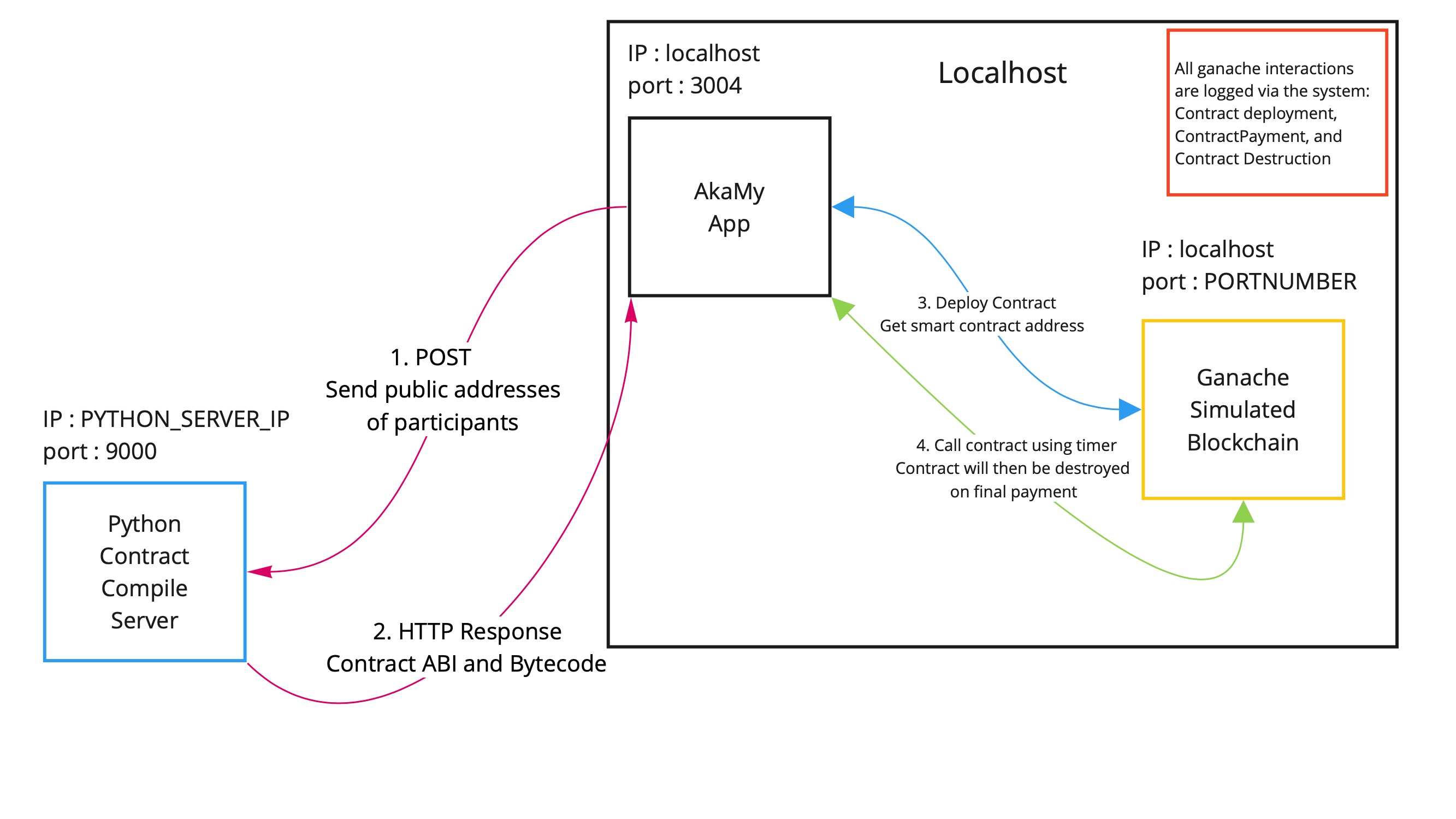AkaMy-Rent Application

The Vision
AkaMy-Rent hopes to provide a framework that allows rental agreements to be: more accessible, easier to make, and provide a greater level of assurance for both homeowners and renters. Renters can benefit by having an assured rental cost that won’t go up so long as their contract is secured on the blockchain. Homeowners can benefit by using the automated and immutable features of a smart contract and the Ethereum blockchain to ensure that rent comes in on time and can be fully paid.
Profiles and Contract attributes
- Create a user profile
- Basic information
- Ethereum account information
- Rental agreement
- Homeowner information
- Tenant information
- Monthly rent
- Terms and conditions
- Tenant stance: whether they agree with the terms and conditions
- Homeowner and tenant signatures
Key Features
- Create a smart contract and smart contract timer based on the rental agreement.
- Python server that utilizes the Solidity Compiler to compile smart contracts from the rental agreements.
- Application based timer to call the smart contract, once the contract is complete the smart contract is removed from the network.
- Uses the Ethers JS framework to commit smart contract interactions.
- Messaging system for negotiating contract and logged communication between homeowner and tenant.
- Connection to the Ethereum test network such as Ganache to simulate smart contract interactions.
Implementation
AkaMy-Rent utilizes the Meteor framework as the foundation for the application. The front end elements utilize the Semantic-UI React JS framework. The backend utilizes Mongo DB to maintain user data along with messages, and smart contract data. The application works with and without a blockchain. In order to connect to a blockchain network developers must run the application locally. It's possible to connect the application to a real network, but as of now it has only been tested thoroughly on Ganache created networks. There are some bugs which are addressed in this document. Considering the time crunch the application does run pretty smoothly. Profiles can be mad, the messenger functions well, contracts can be created and signed by users, and the dashboard reacts to the created contracts.
My contribution
If you go to our product pages Project team page, you'll see that I'm the product owner. I originally came up with a very loose project idea where smart contracts could be used to pay rent. My Master's project was based on a simulated Ethereum network, so I thought that using an immutable program such as a smart contract could have some use as a real contract. That being said, I was the most knowledgeable on the team when it came to anything involving Ethereum and smart contracts.
There was a lot to learn in the project:
- For example, Meteor can’t compile smart contracts internally with SolidityJS due to issues with Web Assembly.
- Smart contracts themselves cannot have a function that keeps track of time, nor can they do periodic function calls.
- There are websites that offer “timed transactions” as a service.
- Ganache doesn’t always destroy contracts from it’s simulated blockchain due to a bug.
One of the most important insights came from user testing, in which out of 9 users, only 1 of them knew the complexities of Ethereum. This user was the only that could fully engage and ask questions regarding the smart contract mechanism of our application. Overall there isn’t really a “need” for Ethereum to be used, but it was interesting to see what it would be like to try.

The picture shown above is the system that I developed so that way I could utilize smart contracts in the application. The Smart Contract portion of the Developers guide is the product of all the research I had done on this project. In short, I put the smart contract into the "smart contract application".
Mahalo
Thank you to Beemnet Alemayehu, Devin Eng, Holm Smidt, and Yang Qian for taking care of the rest of the application. My part was a small part, and luckily my experience gave me an advantage on knowing where to start when researching on smart contract integration. Most of the Community Feedback came from the products of the other members. Without them, there wouldn’t have had any user feedback to work with, nor would there have been any way to see how this app could become more “real”.
Links
Here’s the link to the AkaMy-Rent GitHub page if you’d like to see the source code.
Here’s a link to AkaMy-Rent organization page for more information as well as developer information.